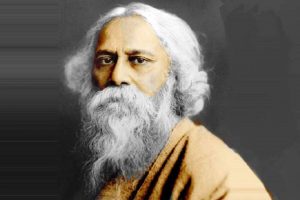By Scott Mervis
No matter how or when you became aware of David Bowie, chances are it shook up your world.
And that’s because Bowie seemed to come from a different one altogether.
For baby boomers, it started with “Space Oddity,” a song that launched, right along with Major Tom, a new generation of glam-rock led by the British star born David Jones.On Monday, fans woke to the shock that Bowie, who released his 25th album Friday on his 69th birthday, had died of cancer. Fans didn’t even known he was ill. His mercurial last chapter brings to an end a nearly 50-year, Hall-of-Fame career marked by timeless albums, beloved hits, a visual feast and, most of all, a thirst for constant reinvention.
People would have been forgiven to think that the man behind that breakthrough single, released in 1969, just days before the Apollo 11 launch and a month before Woodstock, was a fly-by-night oddity himself. There was a quiet reaction to his full-length debut as well as the follow-up, “The Man Who Sold the World.” And then came “Changes,” in January 1972, a signature statement that set the stage for Bowie’s first U.S. invasion.
Pittsburgh promoter Rich Engler, a drummer who started booking concerts in the late ’60s, was ready for it.
“I prided myself all my life in being one step ahead, music wise,” he said, and in 1972 that meant contacting Bowie’s manager Tony DeFries and being at the Cleveland Music Hall on Sept. 22, 1972 for Bowie’s American debut on the Ziggy Stardust Tour.
“The guy was totally groundbreaking,” Mr. Engler says. “The only thing before him would have been Lou Reed, but Bowie just blew it out of the water. The Beatles had just broken up around the same time period, and he was in a class all by himself.”
That night, he went backstage and met Bowie and then-wife Angela, and he found him to be quite affable. Mr. Engler booked him to play the Stanley Theater (now the Benedum) on Nov. 28, 1972, the week he released “The Jean Genie,” with his band Phweet Phwew opening the show.
“We got there in the afternoon,” recalls keyboardist Hermie Granati, “and watched the guys walk in. We were in total awe because we never saw anyone look like that.”
John Artale, a 16-year-old who would go on to become a manager at National Record Mart and Heads Together, says, “My dad dropped me off Downtown. I said I was going to a movie. And most importantly, I wore an army jacket, so no one would think I was gay or something because I liked David Bowie.”
Both of them remember the stunning strobe effect on “Moonage Daydream.” For the encore, Bowie let the crowd choose the Velvet Underground song, their cheers and applause steering him toward “White Light White Heat” over “Waiting for My Man.” The after-party was at Mahoney’s on Liberty Avenue (still there), where Bowie sat at the bar drinking White Russians. When he was asked about the Beatles, who had officially parted two years before, Bowie said, “That was then. Things have changed,” uttering that c-word once again.
He was among the most drastic of those changes, putting his otherworldly stamp on the music, fashion, art and stagecraft of the ’70s, and becoming an icon for glam, punk, New Wave, avant-garde and blue-eyed soul, among other genres.
“One of my earliest childhood memories was seeing David Bowie on ‘The Midnight Special’ doing a preview of the upcoming ‘Diamond Dogs’ LP,” recalls Michael Kastelic of Pittsburgh garage-punk band The Cynics. “Well, my mind was blown and soon David Bowie became my gateway drug to everything I still love today.”
Karl Mullen, a Dublin-born artist who was at the forefront of the Pittsburgh punk movement in the ’70s, says, “He gave all of us who didn’t quite fit the mold another model of ‘self’ and the permission to invent ourselves.”
Bowie visited Pittsburgh frequently throughout ’70s. He brought the elaborate Diamond Dogs Tour to the Syria Mosque for two nights in June 1974, and then stripped away the costumes, theatrics and malfunctioning six-ton set design to rebrand it as The Soul Tour, which stopped at the Civic Arena that November.
He played the Arena in March 1976 on the Thin White Duke Tour, supporting the elegant “Station to Station” album, and then in April 1978, supporting “Low” and “Heroes.” Neither of his two big ’80s tours played here, so he did not return until 1990 when he played one of the first shows at the Star Lake Amphitheater on the greatest-hits Sound+Vision Tour. He returned in 1995 in a rare opening role on tour with Nine Inch Nails, fronted by another Bowie disciple, Mercer’s Trent Reznor.
Appropriately, his final performance in Pittsburgh, on the Reality Tour in 2004, was back in the same building where he started here, the Benedum.
It’s fitting that one of Bowie’s inspirations was Pittsburgh native, pop-art icon Velvet Undergound manager Andy Warhol, whom he celebrated (if that’s the word) in cryptic fashion with the 1971 song “Andy Warhol.”
According to Matt Wrbican, chief archivist at Andy Warhol Museum, Bowie saw Warhol’s play “Pork” in London in 1971, and three members of the production became part of Bowie’s production company MainMan. He also visited Warhol’s Factory studio in Sept. 1971 to show off his mime skills and share the song with with the artist whom he would later portray in the 1996 film “Basquiat.”
Even before that, the first Pittsburgh connection he made was with Lou Christie, loved himself in England for his hits “The Gypsy Cried” and “Lightnin’ Strikes.” In 1969, Christie stood with Bowie, Dusty Springfield and Tiny Tim in a receiving line for Princess Margaret after performing for her at the London Palladium.
“It was so interesting to watch him on stage,” Christie says. “The world was starting to change there and he was so ‘out there.’ He was really advanced in his thinking, a very interesting person who was always recreating himself.”
Christie heard the news Monday via Howard Stern. No matter how you heard it, it was a shock.
“I feel like someone gut punched me,” Mr. Kastelic said, “but he left us so much to live for.” – Pittsburgh Post-Gazette – Via Google




